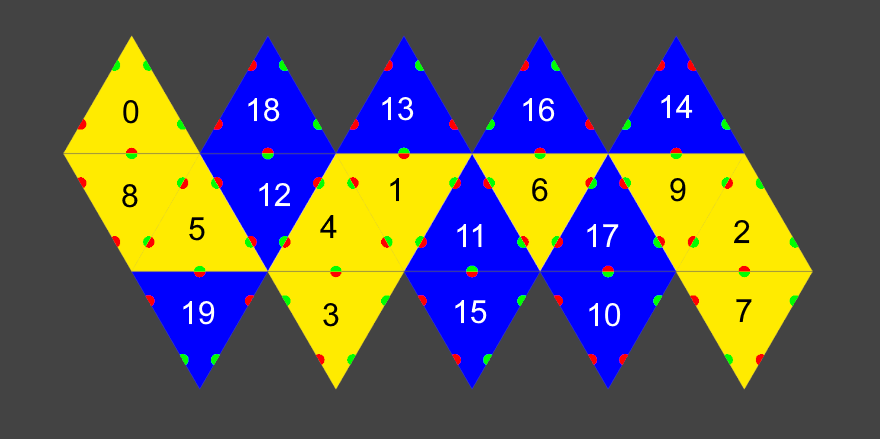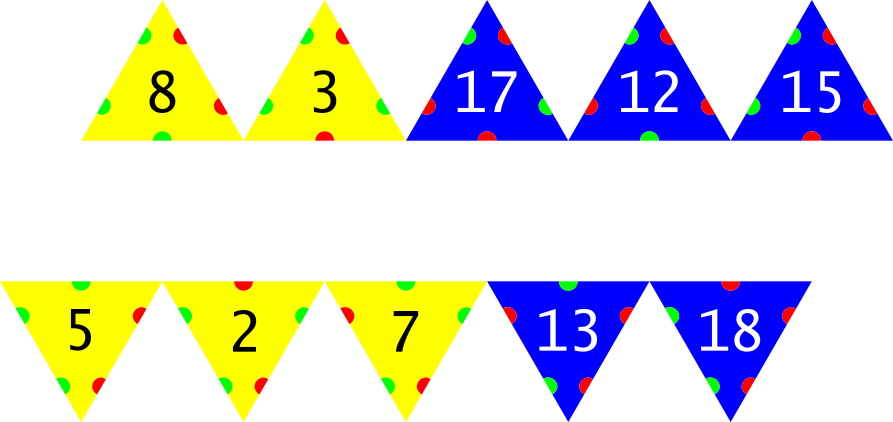An icosahedron has 20 faces which are equilateral triangles.
Tom wants to create a very hard mechanical puzzle. With his brand new 3D printer in mind he designs 20 puzzle pieces with identical shapes which in principle nicely fit together to build the icosahedron:
The face that is visible after assembling the icosahedron is on the back.
To hold the parts together he uses magnets which he glues into the 5 holes that he had prepared quite devilishly.
There are exactly 10 ways to orient the magnets such that two magnets are oriented with north poles facing outwards. These 10 parts he wants to print in yellow. Here is one example:

And of course there are also exactly 10 ways to orient the magnets with two south poles facing outwards. These 10 parts he wants to print in blue. Example:
Hey, we got a complete set of exactly 20 different pieces! There are $19!*3^{19}> 10^{26}$ ways to assemble the icosahedron if we ignore the magnets.
- Is at least one way for the magnets to match everywhere (north to south)?
- Are there especially nice looking solutions with 5-fold symmetry? Obviously, only the colors of the pieces are interesting for this part.











